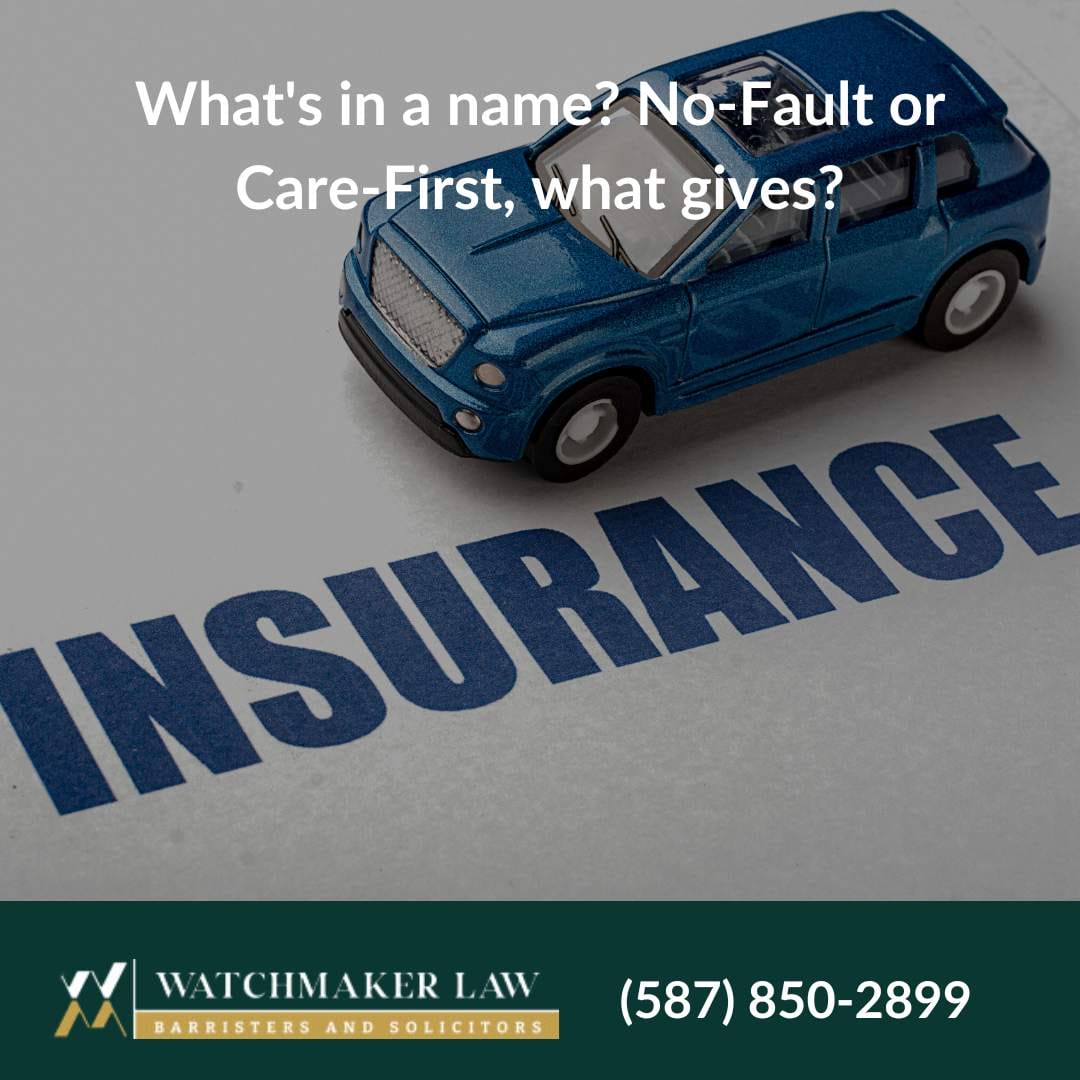The Government of Alberta is introducing sweeping changes to automobile insurance system in Alberta specifically as it relates to how injured persons bring claims relating to their personal injuries sustained in motor vehicle accidents. The law was introduced through Bill 47 and received royal assent on May 15, 2025. This new law is named Care-First by the Provincial Government, attempting to put focus on the primary rationale of the law- prioritizing care over litigation in Alberta for personal injuries sustained after a motor vehicle accident. Critics of this new law continue to call it No-Fault, arguing that the Care-First Moniker may mask the true nature of the law and the principles governing the new law. In this blog post, we present a contrasting view of the new system, while identifying several areas of the law where fault still matters.
The Automobile Insurance Act is a new law passed on May 15, 2025 which attempts to prioritize care for Albertans after motor vehicle accidents in Alberta. While the term No-fault connotes that fault may no longer be the priority in the matter. The most important aspect will be the care component of the case- which means providing medical care and benefits that prioritize recovery. The name one picks for this new system is more a factor of what one is placing the emphasis on.
No-Fault or Care-First? Why Alberta’s New Auto Insurance Name Matters
When we hear the terms “No-Fault” and “Care-First,” it may seem like just names for different kinds of insurance plans. However, these labels hold deeper meanings that can shape how people feel about their healthcare experiences with the new insurance regime. “No-Fault” suggests a system where blame is set aside, making it easier for patients to get the help they need without worrying about who’s responsible. The provincial government argues that this could be seen as a relief for those dealing with injuries or accidents because it allows them to focus on recovery rather than playing a game of finger-pointing. On the other hand, “Care-First” emphasizes the idea that health should come before anything else. It invites us to think about an ideal world where healing is prioritized over paperwork and bureaucracy, reminding us that at the core of any healthcare service lies the fundamental desire to provide care to those who need it.
These contrasting names reflect not just policies but philosophies regarding health and wellness. While “No-Fault” might promise efficiency, it risks overlooking the human side of medicine. If everyone feels safe from judgment, perhaps they’ll seek treatment sooner? yet there’s a danger of treating problems merely as transactions. In contrast, “Care-First” shines a light on empathy and connection between patients and providers, which can foster trust and better outcomes. Yet, this approach must also navigate practical challenges; caring for everyone first can sometimes lead to longer wait times or resource shortages. Ultimately, what matters most isn’t just what we call these systems, but how well they serve individuals seeking help during some of their toughest moments. Names may matter, but actions speak louder—showing that real change happens when compassion meets responsibility.
The name that the Government should term the new automobile insurance system carried so much weight on the minds of opposition law makers that they proposed a formal amendment to strike out the term Care-First for No fault in the law, while the law was being debated in the legislative process in Alberta Legislature. While the proposed amendment ultimately failed, it shed light on the importance that the lawmakers in government and in the opposition placed on the names given to the new system of automobile insurance in Alberta. In reality though, what Albertans would care about ultimately would be the implementation of the new system and whether the insurance companies can deliver the care promised by this law in a timely and efficient manner. Whether the system and the actors in the system can provide the benefits with care as the main priority by following the stipulations of the new legislations to the letter. This will be the key determining factor when it comes to how persons who have sustained serious personal injuries feel about the new law- is it care focused or “no-fault”.
Where Fault Still Applies in Alberta’s Care-First Insurance System
The provincial government is taking the position that it is not no fault. During debates in the house, the government clearly indicated that fault will still matter. When one reviews the law itself, you will find instances of where fault still matters. As a starting point, it is worth noting that fault is still attributed to individuals who are convicted of Criminal Code; Traffic Safety and Youth Criminal Justice Acts offences respectively. In addition to these, third parties such as automobile manufacturers, suppliers of automobile parts, social hosts may be still be sued. Also, intentional acts still carry a degree of responsibility as well in this new system, as it does in the current tort system as benefits can be reduced or terminated if the injured party is deemed to have wilfully caused their own injuries. So objectively speaking, fault will still matter in certain circumstances, while noting as well that a vast majority of actionable claims would have been outlawed by this new law. It should be noted that there are still regulations that will be introduced later in 2025 that will further spell out situations where lawsuits can still be brought against at fault drivers. This will further ass credence to the government’s position that fault still matters in certain situation, hence why the term “No-fault” may not be appropriate for this matter.
Regardless, what will matter the most is the implementation of the idea behind the new system- Care-first. Albertans may not care what the new law is called, if it is properly implemented and if the Care-First Tribunal independently adjudicates disputes brought before it. As indicated by the above summary, the new law is very nuanced and you should still speak with a lawyer in the event that you are involved in an accident after the implementation of the new law in 2027. Note that the Care-first (no fault) system and all its changes do not apply to accidents that occur before January 01, 2027. This means you can sue under the current fault model for all accidents that occur before 2027. Our lawyers at Watchmaker Law have experience dealing with complex personal injury cases from motor vehicle accidents in Alberta.
Contact us at 1- 825-203-9801 or chat with our live representative now.



